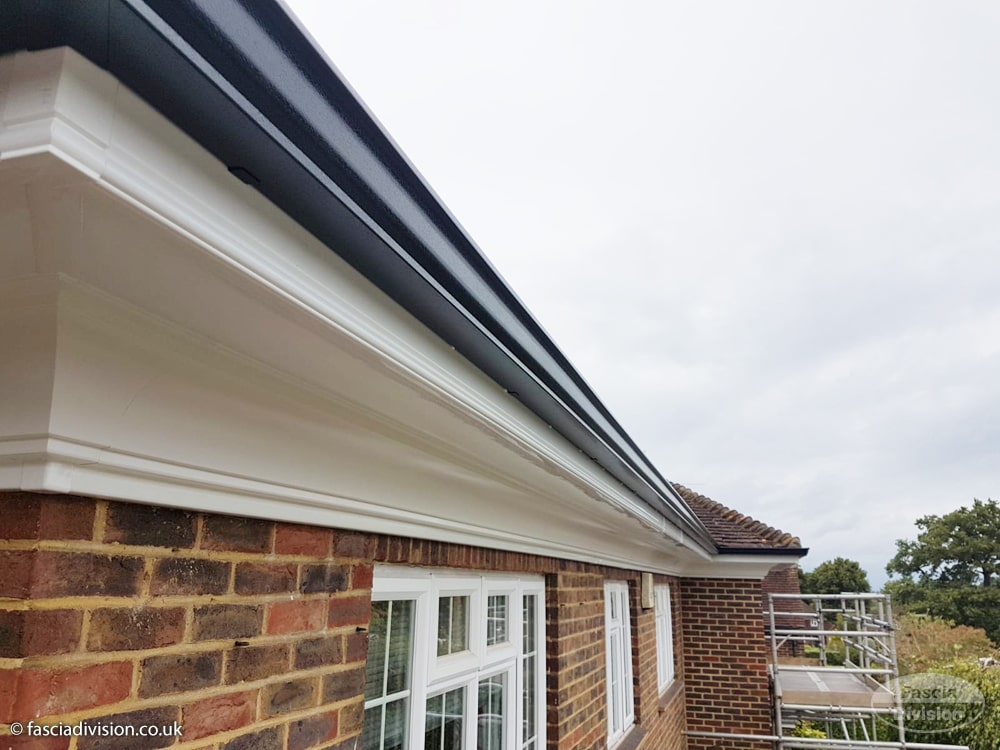Fascia Board Repair: A Comprehensive Guide
Fascia boards play a crucial function in the structural stability of a home. They are the long, straight boards that run along the lower edge of the roofing; they serve both functional and aesthetic purposes. In time, fascia boards can experience damage due to the elements, pests, or bad drain systems. This short article aims to provide an extensive understanding of fascia board repair, detailing essential details on recognizing damage, repair techniques, and maintenance suggestions for homeowners.
Understanding Fascia Boards
Fascia boards are typically made from wood, vinyl, or aluminum. Their primary function is to support the bottom row of roof shingles and hide the rafters, hence supplying a clean and completed aim to the roofline. Furthermore, fascia boards also play a vital role in protecting your home from water damage by helping to direct rainwater away from the house through gutters.
Why Repair Fascia Boards?
Damaged fascia boards can result in a wide variety of problems, consisting of:
- Water damage: Allowing wetness to penetrate the roofing system structure, leading to mold and structural decay.
- Bug invasions: Damage can supply entry points for bugs like squirrels or insects.
- Visual concerns: Cracked, deformed, or peeling fascia can detract from a home's curb appeal.
Determining Damage
Before proceeding with repairs, it is crucial to identify the condition of your fascia boards. Some typical signs of damage consist of:
- Rotting wood: Often resulting from prolonged direct exposure to wetness.
- Peeling paint: Indicates moisture intrusion or inadequate sealing.
- Fractures or divides: Can take place due to thermal growth or extreme weather.
- Sagging or removed boards: May be a sign of structural issues or pests.
Table 1: Common Fascia Board Damage Types
| Damage Type | Description | Cause |
|---|
| Decomposing | Soft, spongy texture | Prolonged moisture exposure |
| Peeling Paint | Flaking or blistering paint | Wetness seepage |
| Cracks | Noticeable cracks | Thermal growth |
| Drooping | Board is not lined up correctly | Structural damage |
| Bugs | Holes or tunnels in the board | Entry by rodents/insects |
Fascia Board Repair Techniques
Fixing fascia boards includes a number of techniques based upon the type and level of damage. Below work strategies for fascia board repair.
1. Minor Damage: DIY Repair
For minor damages, homeowners can frequently manage repairs with standard tools.
Products Needed:
- Wood filler or epoxy
- Paint or sealant
- Sandpaper
- Putty knife
- Primer (if repainting)
Steps:
- Assess Damage: Identify the degree of damage and determine if the whole board requires replacement or if repairs suffice.
- Clean Area: Remove any particles or loose paint.
- Fill Gaps: Apply wood filler or epoxy to cracks or holes using a putty knife.
- Sand Smooth: Once dry, sand the repaired location to produce a smooth surface.
- Paint/Seal: Apply guide and paint to match the fascia.
2. Considerable Damage: Board Replacement
If a fascia board is severely harmed, a complete replacement might be required.
Materials Needed:
- New fascia board (wood, vinyl, or aluminum)
- Nails or screws
- Hammer or drill
- Safety goggles and gloves
- Primer and paint (if wooden)
Steps:
- Remove Damaged Board: Carefully take out the harmed fascia utilizing a lever or saw, making sure not to disturb surrounding materials.
- Step and Cut: Measure the brand-new board to the exact same length as the old one and cut accordingly.
- Attach New Board: Position the brand-new fascia board and protect it with nails or screws, guaranteeing it is flush versus the roofline.
- Finish: Paint or seal the brand-new board to protect versus moisture.
3. Professional Help
For extensive damage or property owner uncertainty, employing a professional contractor may be the best alternative. A certified contractor can examine the scenario precisely and ensure that any repairs or replacements depend on market requirements.
Maintenance Tips for Fascia Boards
To extend the life of fascia boards and prevent future damage, consider the following maintenance ideas:
- Regular Inspection: Check fascia boards a minimum of when a year for indications of damage.
- Tidy Gutters: Ensure seamless gutters are routinely cleaned to avoid water from pooling or overflowing onto fascia boards.
- Seal and Paint: Apply sealant or paint every few years to protect wooden fascia boards from moisture.
- Trim Overhanging Branches: Prevent physical damages from falling branches by keeping surrounding trees cut.
FAQ Section
Q1: How typically should I inspect my fascia boards?A1: It is recommended to
examine your fascia boards at least once a year, specifically after heavy storms or seasonal modifications. Q2: Can I paint over peeling fascia?A2: Peeling
paint must be removed, the area must be sanded, and any underlying damage must be addressed before repainting. Q3: Is it required to replace the whole fascia board if it's damaged?A3: Not always; minor damage can typically be fixed with filler, but extensive damage might necessitate replacement. Q4:
What materials are the very best options for fascia boards?A4: Wood is traditional and aesthetically pleasing; however, vinyl and aluminum are more durableand resistant to rot and pests. Fascia Board Repair - Https://Www.Famahhealthcareservices.Com/Employer/Fascia-And-Soffit-Specialists - is a necessary aspect of home maintenance that considerably impacts the overall health of the roofing and structure. By determining damage early, using efficient repair methods, and adhering to maintenance tips, homeowners can protect their residential or commercial property from costly repairs in the future. Whether selecting DIY approaches or looking for professional help, comprehending the significance of fascia boards and their maintenance is vital for any property owner.